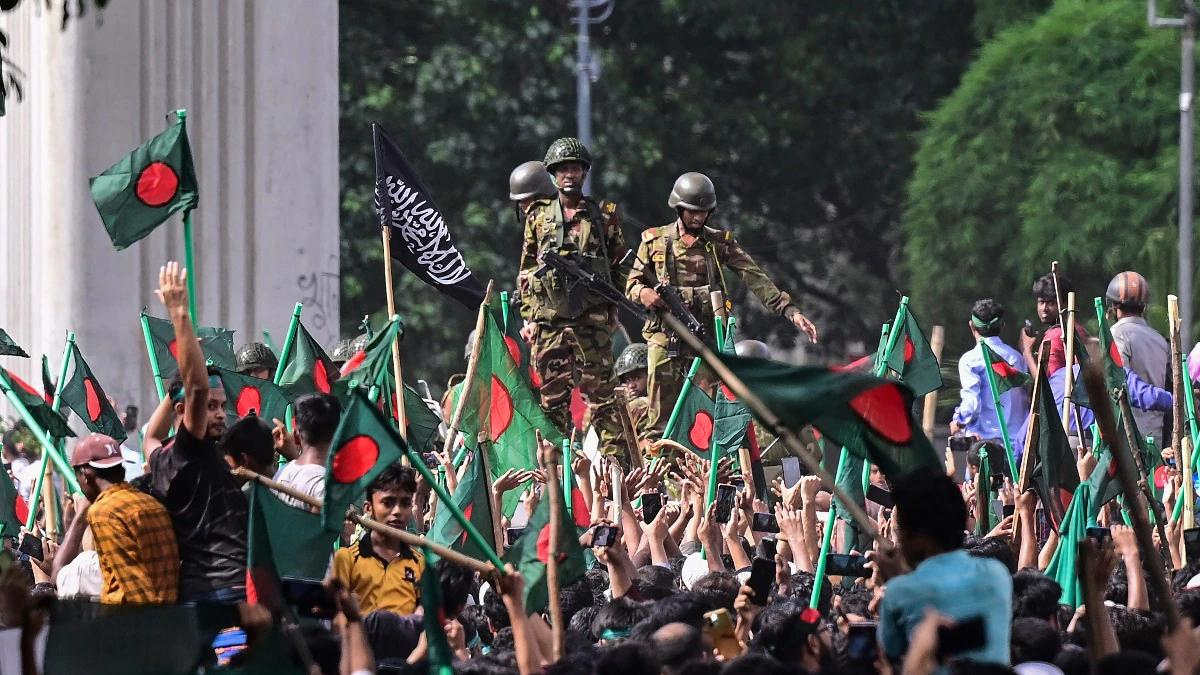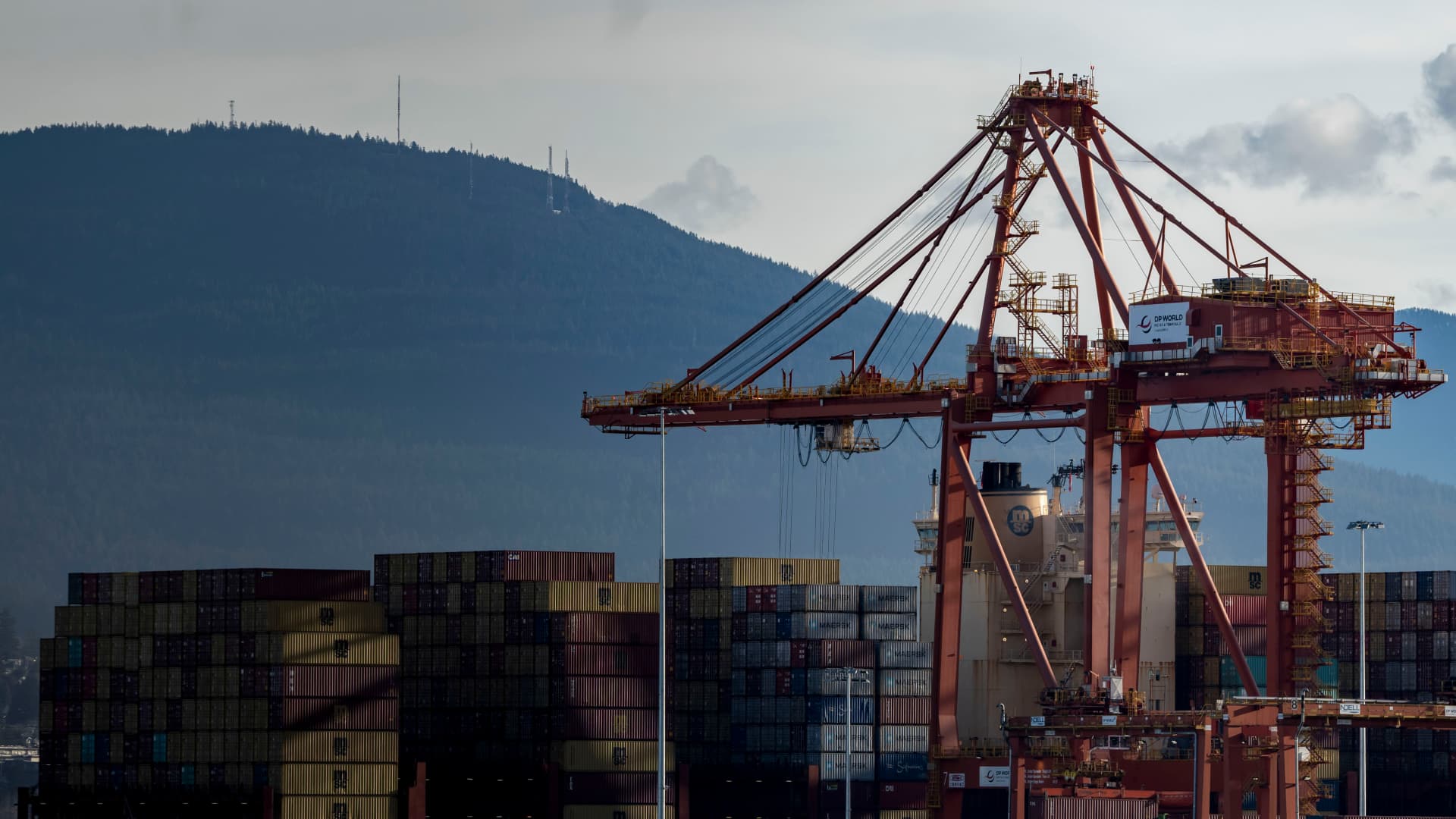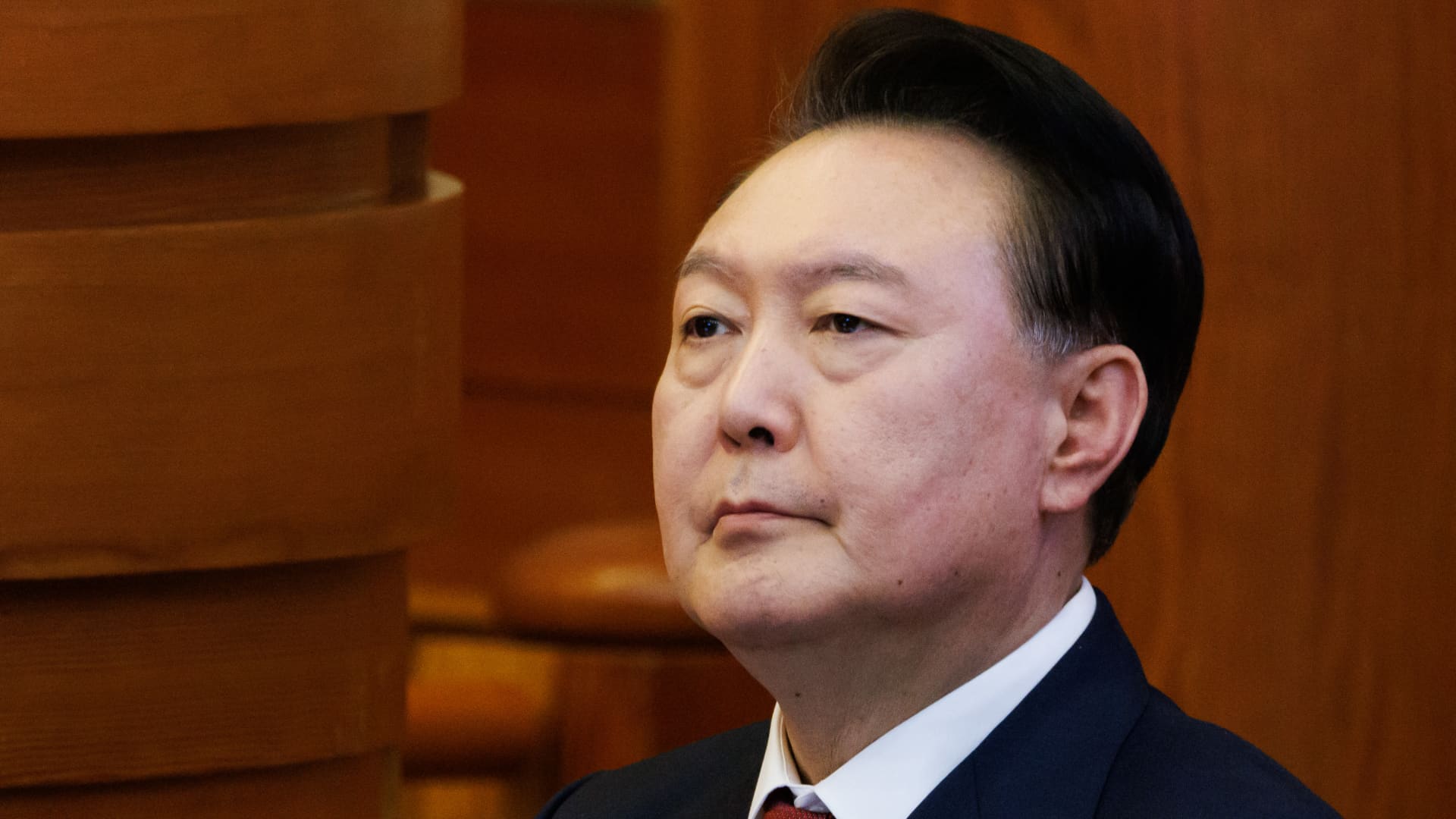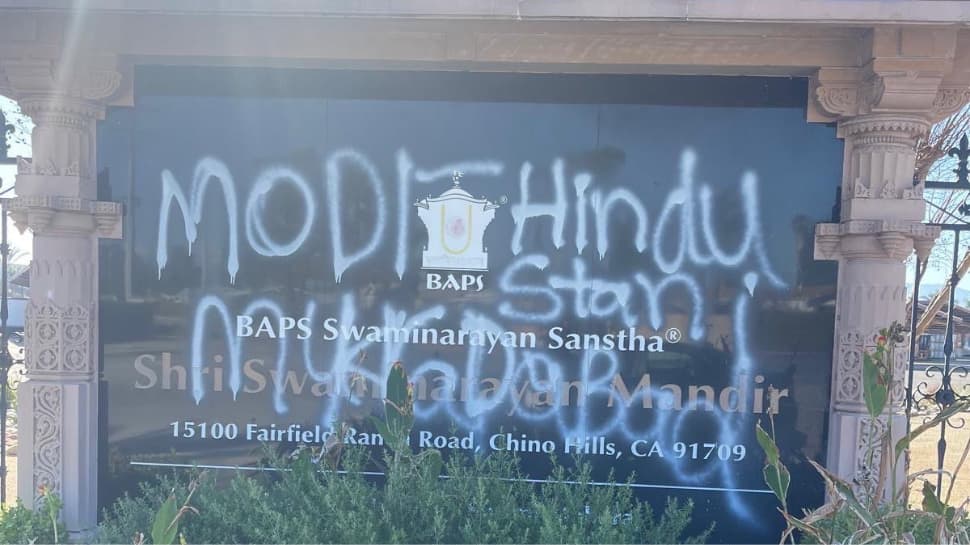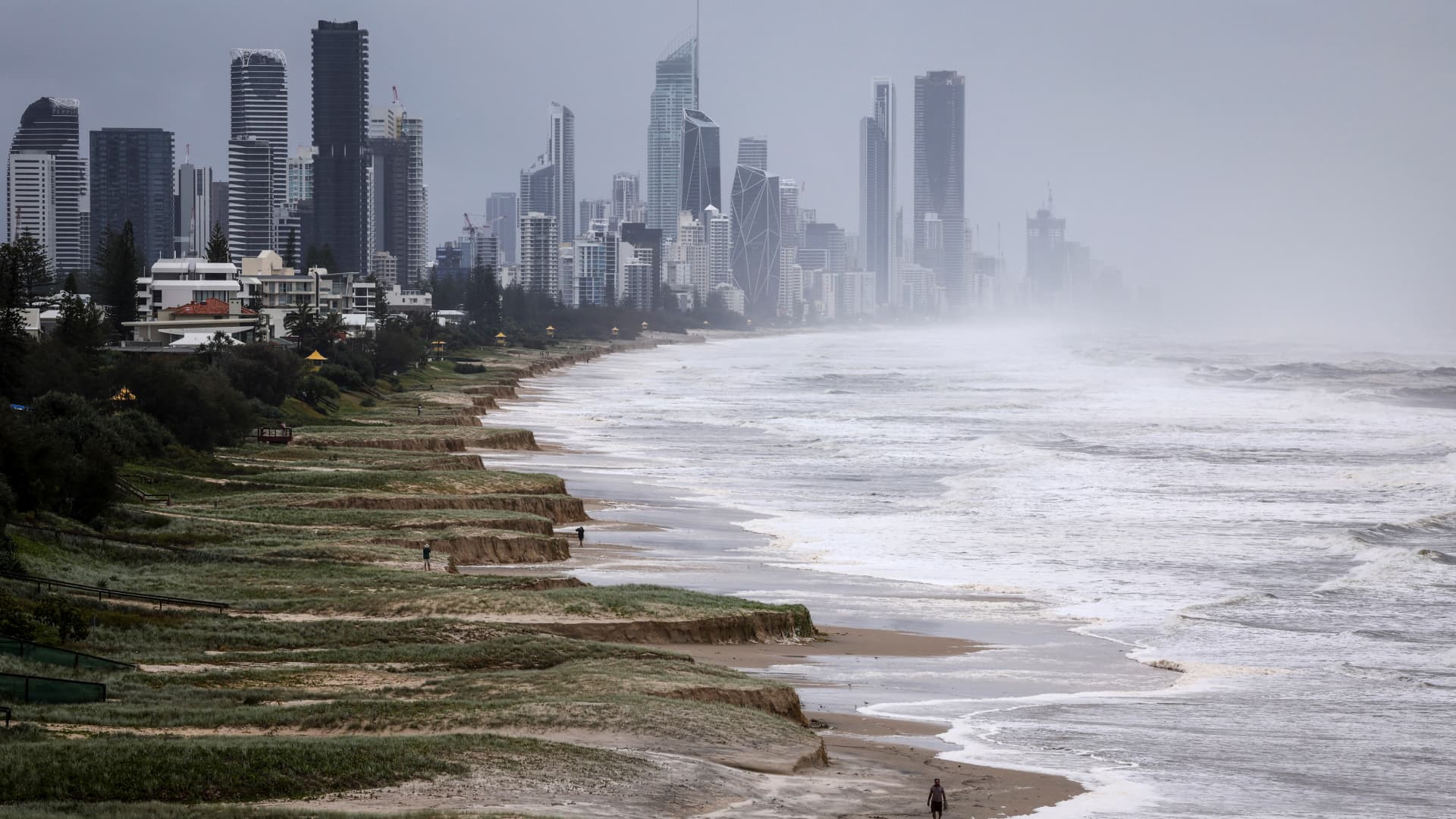Bangladesh: In an unprecedented turn of events, Bangladesh has been plunged into chaos as student organizations across the country have engaged in violent protests. This civil unrest, seen as a significant political conspiracy, has led to the ousting of Prime Minister Sheikh Hasina, who has reportedly fled to India, seeking asylum from the United States and Britain. But how did this all begin, and what were the key events that led to such a dramatic escalation?
Table of Contents
Origins of the Unrest
The seeds of this turmoil were sown when Prime Minister Sheikh Hasina’s government altered the quota system in government jobs, reserving a significant portion for the descendants of freedom fighters from the 1971 Liberation War. This policy was intended to honor the contributions of those who fought for Bangladesh’s independence, but it sparked widespread discontent among students and job seekers who felt it unfairly reduced their chances of securing employment based on merit.
Although the Supreme Court had previously imposed a temporary suspension on the quota system six years ago, the policy remained a contentious issue. In recent times, students began demanding the abolition of the quota system altogether, leading to peaceful protests that soon escalated into violence.
Escalation and Government Response
By mid-July, demonstrations had intensified, with clashes between students and police resulting in injuries and fatalities. The government’s advisory warned against traveling to Bangladesh as the protests turned increasingly violent. Students from private schools and colleges joined the fray, and by July 17, the situation had deteriorated significantly, with the death toll rising and hundreds injured.
Prime Minister Sheikh Hasina appealed for peace, stating that the reservation policy was in compliance with a High Court order and aimed at honoring the freedom fighters’ descendants. However, her appeals fell on deaf ears as protests continued unabated.
On July 18, protests in Dhaka saw massive destruction and further loss of life. Government buildings were vandalized, and fires were set, leading to a nationwide curfew and the deployment of the military to restore order. The death toll continued to climb, and by July 19, mobile internet services were suspended to curb the spread of unrest.
Collapse of Law and Order
Despite these measures, the violence escalated. Prisons were attacked, resulting in the release of hundreds of inmates. Public gatherings were banned, but the curfew did little to quell the unrest. Reports indicated that over 100 people had died by July 20, with thousands injured. The situation drew international attention, with foreign governments attempting to evacuate their citizens from the conflict-ridden country.
By July 21, the death toll had exceeded 133, and the military was ordered to shoot on sight in an attempt to control the chaos. The Supreme Court intervened, ruling against the quota system, which further fueled the protests. Protestors, emboldened by their success, demanded the release of their leaders and government accountability for the violence.
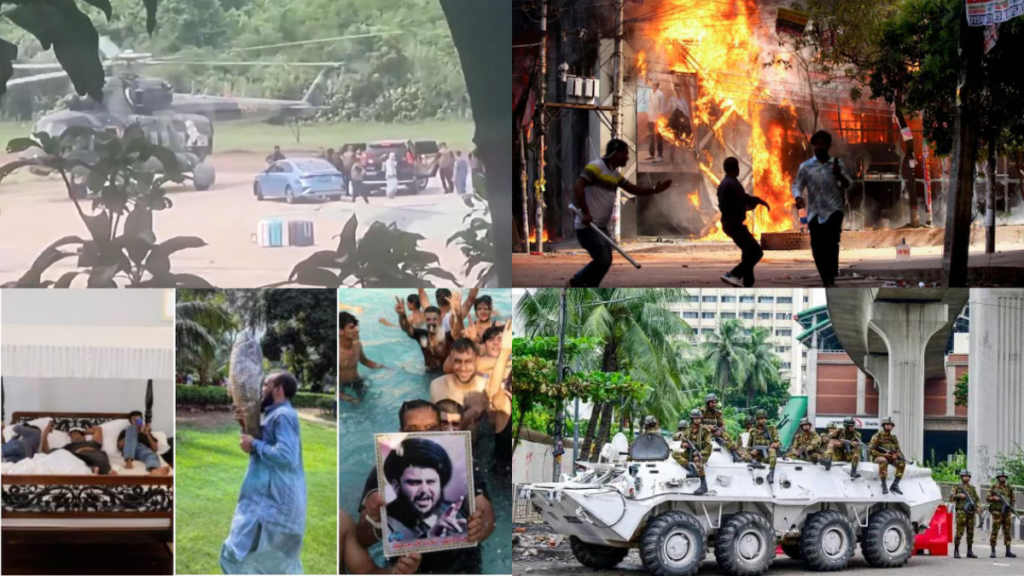
Prime Minister’s Flight and Political Turmoil
On August 4, Prime Minister Sheikh Hasina resigned amidst fears for her safety. Violent protestors attacked her residence and destroyed public property. Reports surfaced that she had fled to India in a personal helicopter, seeking refuge in another countries.
In her absence, Bangladesh was plunged into deeper chaos. The military took control, with Nobel laureate Muhammad Yunus being named interim head of state. His appointment was controversial, given his long-standing criticism of Hasina’s government. Yunus, known for his work with microfinance through Grameen Bank of Bangladesh, was seen as a beacon of hope for some but a divisive figure for others.
The aftermath saw increased violence against Hindu minorities, with temples and homes being targeted. This sectarian violence added another layer of complexity to the already volatile situation.
International Reactions and Future Prospects
India and other neighboring countries closely monitored the situation, particularly the violence against minority Hindus. The international community called for calm and urged the new interim government to restore order.
By August 6, the interim government was formally established, and plans for new elections within three months were announced. Former Prime Minister Khaleda Zia, leader of the Bangladesh Nationalist Party (BNP), was released from prison and addressed the nation, promising to rebuild the country with love and peace.
Conclusion
The upheaval in Bangladesh is a stark reminder of the delicate balance between governance and public sentiment. The abolition of the quota system, while seen as a step towards meritocracy, became a flashpoint for widespread discontent. The protests, which began as a call for fair employment practices, morphed into a larger movement against perceived governmental injustice and corruption.
As Bangladesh grapples with this period of uncertainty, the international community watches closely, hoping for a peaceful resolution and the restoration of democracy. The events of the past months have reshaped the political landscape, and the path forward remains fraught with challenges.
